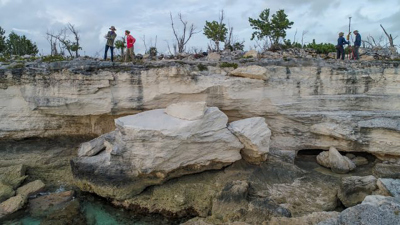- Home
- Discover
- Archive News
- News 2021
- sea levels
New study on changing sea levels
In a new study, a team at Columbia University’s Lamont-Doherty Earth Observatory (USA) and MARUM believes they have an answer: They say that researchers examining signs of past sea levels along various coasts may have failed to accurately correct for long-term ups and downs of the land itself. Based on newly sophisticated measurements made across the Bahamas along with new methods of analyzing data, the researchers produced lower—though still daunting—estimates for the last interglacial. They say seas peaked at least 1.2 meters higher than today—roughly in line with most current models for the next 100 years of so. However, they say, levels could have been higher. An unlikely upper limit, they say, is 5.3 meters. The study appears this week in the Proceedings of the National Academy of Sciences (PNAS).
Blake Dyer, Jacqueline Austermann, William J. D’Andrea, Roger C. Creel, Michael R. Sandstrom, Miranda Cashman, Alessio Rovere, and Maureen E. Raymo: Sea-level trends across The Bahamas constrain peak last interglacial ice melt. PNAS 2021. DOI: https://doi.org/10.1073/pnas.2026839118



